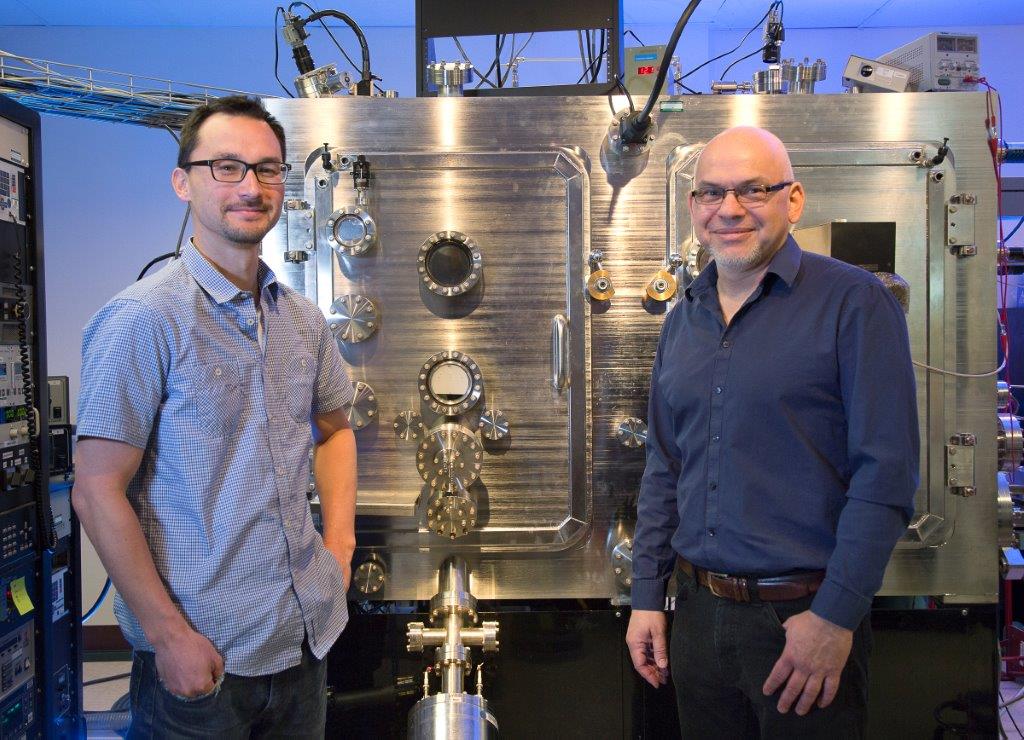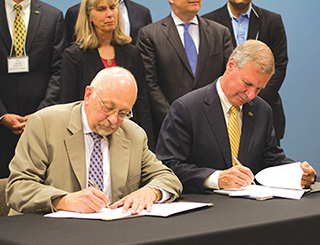

Chris Wung, left, is senior scientist, and Vladimir Matias is CEO of iBeam Materials Inc. The Santa Fe company was one of seven small businesses chosen to work with Sandia National Laboratories to advance their technologies. iBeam is developing new LED products for the lighting, display and wearable electronics industries. (Photo by Sandra Valdez)
Small Business Vouchers Pilot (SBV): The Office of Energy Efficiency & Renewable Energy at DOE chose Sandia as one of five leads in a pilot that will give small, clean-energy companies access to national laboratory expertise and resources. As a lead lab, Sandia will allocate $2.75 million in vouchers to companies working in solar, wind, and geothermal technologies. Companies with fewer than 500 employees will be able to apply to Sandia for $50,000 to $300,000 in vouchers that can be used for a variety of technical assistance. (1900, 6100, 6900, and 8300) EC, SSEF
Academic Alliances

Sandia established an Academic Alliance to strengthen its strategic university partnerships, signing memorandums of understanding with Georgia Institute of Technology, Purdue University, University of Illinois Urbana-Champaign, University of New Mexico, and University of Texas-Austin. The overarching objective of the Academic Alliance is to advance and help define the future of engineering for national security. AA has three specific goals: solving the nation’s big problems; sustaining and engaging human capital; and accelerating the adoption of new technologies. (150, 1200, 1500, 1900, 3500, 6100, 8040, 10600, 11100, 11500) IMS, LF
The Nuclear Weapons Program Management Unit partnered with the US military academies to provide 29 cadets and midshipmen with opportunities to spend 4-6 weeks working at Sandia. This program allows future military leaders to participate in hands-on work, interact with Sandia researchers, and gain a better understanding of the Labs and its capabilities. The program matched the students with applicable research projects and provided opportunities for the students to tour various areas of the Labs. The program coordinator also provided information on local area attractions and several opportunities for students to network outside of work. (200) NW, NW